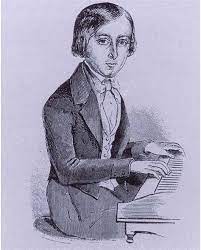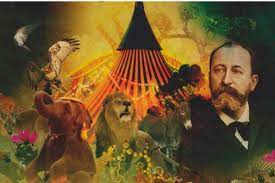
Born in Paris on 9 October 1835, Camille Saint-Saëns grew up as an only child in the care of his mother Clémence and his great-aunt Charlotte Masson, as his father, an official in the Ministry of the Interior, had died within a few months of his son’s birth. The boy’s extraordinary gifts as a polymath, encompassing music and art, together with natural sciences, mathematics and foreign languages, had already become apparent early on. He was already translating texts from Latin and Greek at age seven, as well solving algebra and physics assignments. He was already composing his first pieces in 1839.
Hailed as the “new Mozart” following his first public appearance as a pianist in May 1846 in the Paris Salle Pleyel, he played, amongst other works, Mozart’s piano concerto in B-flat major, K. 450, and Beethoven’s piano concerto no. 3 in c minor, op. 37.
Aged 13, he entered the famous Paris Conservatoire to work obsessively on his further training as pianist, organist and composer.

When he died on 16 December 1921 in Algiers, he had composed more than 300 works in almost all genres, only about two dozen of which are currently firmly established in the concert or academic repertoire. His best-known works include Danse Macabre (1874), the opera Samson et Delila (1877) and the Carnival of the Animals (1876)

As one of the most versatile musicians of his generation, Saint-Saëns was a cultural influence as a composer, teacher, pianist, organist, conductor, critic, columnist, poet and playwright.
